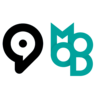No Needles, No Scans: The Breath Test That’s Changing Cancer Detection

Imagine walking into a clinic, taking a deep breath, exhaling into a device, and walking out minutes later with crucial information about your health—without a single needle prick or invasive scan. This is not science fiction. It’s a medical breakthrough that is rapidly gaining global attention: the breath test for cancer detection.
For decades, early detection has been one of the most critical challenges in the fight against cancer. Traditional methods often involve complex imaging, tissue biopsies, or expensive scans, which can be physically uncomfortable, emotionally stressful, and financially draining. But now, researchers and healthcare innovators are developing a non-invasive, painless, and cost-effective solution that could change the future of cancer diagnosis.
The Science Behind the Breath Test
Our breath contains over a thousand volatile organic compounds (VOCs), many of which are byproducts of normal bodily processes. However, certain diseases—including various types of cancer—alter the body’s metabolism in unique ways. These changes leave a chemical fingerprint in our breath.
By using highly sensitive sensors and advanced artificial intelligence algorithms, these breath tests can detect patterns in VOCs that correlate with specific types of cancer. This technology has already shown promising results for lung, stomach, and even colorectal cancer detection in early clinical trials.
What makes this especially exciting is the speed and simplicity. Unlike traditional screening, which can take days or even weeks for results, breath analysis can provide answers in minutes, making it ideal for large-scale population screening programs.
Why It’s a Game-Changer
-
No Discomfort – Patients no longer need to endure invasive procedures like endoscopies, blood draws, or needle biopsies.
-
Early Detection – Cancers caught in early stages have significantly higher treatment success rates and lower mortality.
-
Affordable Screening – Low-cost devices make it feasible for developing countries and rural areas to access advanced screening tools.
-
Global Accessibility – Portable technology allows testing to be conducted in clinics, pharmacies, or even mobile healthcare vans.
How It Works in Practice
The process is straightforward:
-
You exhale into a sterile mouthpiece connected to the device.
-
The machine captures and analyzes the VOC profile in your breath.
-
AI-powered software compares the results to a database of cancer-specific breath patterns.
-
If a potential risk is detected, you’re referred for further testing to confirm the diagnosis.
This step-one screening method can act as a filter—helping healthcare providers focus costly imaging and biopsies only on those who need them most.
Global Research and Trials
Several countries are actively testing and refining this technology. In the UK, trials have shown that breath tests can detect lung cancer with accuracy rates exceeding 80%. In Japan and Israel, research is underway to expand detection capabilities to stomach, pancreatic, and liver cancers.
These studies suggest that multi-cancer detection from a single breath sample could soon be a reality. If approved by regulatory authorities, the impact on global cancer mortality rates could be enormous.
Benefits for Countries Like India
For countries with large populations and limited healthcare infrastructure, such as India, this technology could be revolutionary. Early cancer diagnosis is often hindered by lack of awareness, high costs, and limited access to advanced medical facilities.
A portable, inexpensive breath test could bring cancer screening to rural villages, small towns, and under-served communities—saving thousands of lives each year. Mobile health units could travel across districts, conducting quick screenings and referring high-risk patients to larger hospitals for treatment.
Challenges to Overcome
While the potential is massive, challenges remain:
-
Accuracy & False Positives – The technology must achieve extremely high accuracy to avoid unnecessary anxiety and medical costs.
-
Regulatory Approvals – Each country’s health authority must thoroughly evaluate safety and reliability.
-
Public Awareness – People must trust and adopt the method, understanding that it complements rather than replaces traditional diagnostics.
Looking Ahead
In the next decade, breath analysis could become as common as blood pressure checks. Imagine health camps at schools, workplaces, and community centers offering quick cancer screenings during lunch breaks. The technology could also be integrated into annual check-ups, giving doctors a non-invasive tool to monitor patient health over time.
What’s even more promising is the possibility of using breath tests for other diseases—such as diabetes, tuberculosis, and even COVID-19—creating a multi-disease diagnostic platform that fits into a single device.
The Human Impact
Beyond technology and statistics, the breath test represents hope. It offers a way to reduce the fear, discomfort, and stigma often associated with a cancer diagnosis. It empowers people to take proactive steps for their health without financial or emotional strain.
As one cancer survivor in a UK pilot program said, “If this test had been available earlier, my cancer might have been found before I needed aggressive treatment. It’s a small breath for me, but a giant leap for healthcare.”
Conclusion
The future of cancer detection may soon be as simple as breathing into a device. With ongoing research, regulatory approval, and public education, the breath test could become a frontline tool in the battle against cancer—especially in countries where access to healthcare is limited.
It’s a painless, affordable, and scalable innovation that could save millions of lives worldwide. As the world watches this technology develop, one thing is clear: a deep breath might one day be all it takes to protect your future.
Discover more from 9Mood
Subscribe to get the latest posts sent to your email.




















0 Comments